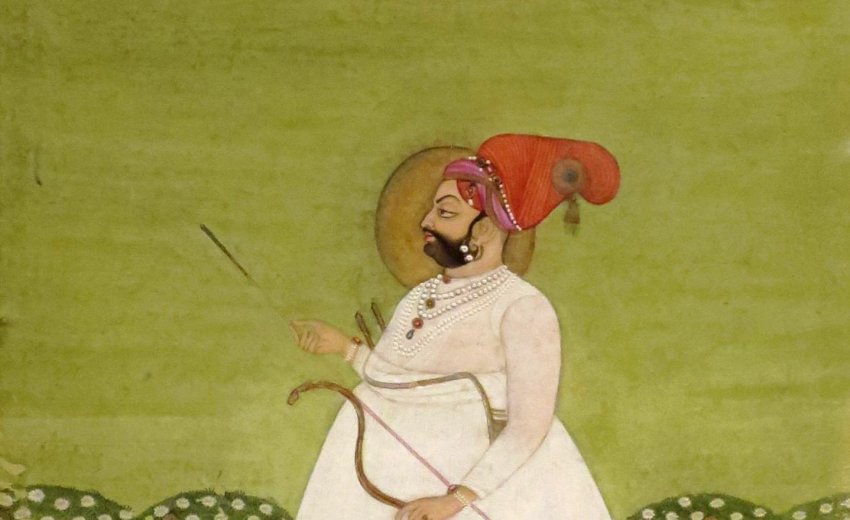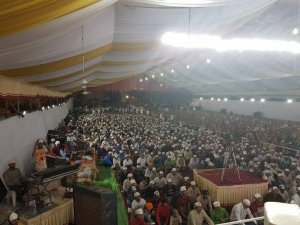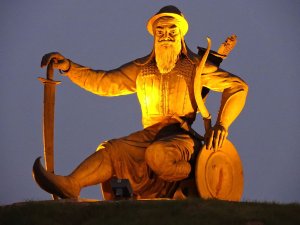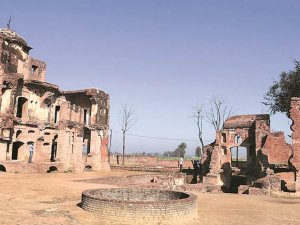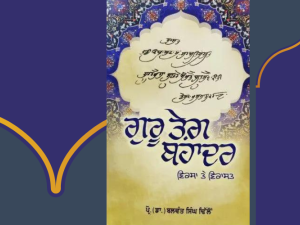The Author
History of the Parliament Online, the official Crown’s website informs that Richard Joseph Sulivan was born on 10th December 1752 and was a British MP and writer from an aristocrat family. His brother John Sulivan was also a Member of Parliament. Richard was related to Laurence Sulivan another Parliamentarian who held an important position in East India Company and encouraged Richard to visit India.
In 1768 Richard went to India as a writer and wrote “An Analysis of the Political History of India. In which is considered the present situation of the East, and the connection of its several Powers with the Empire of Great Britain” in 1779. He came back in England 1782 and was later in 1787 elected MP for New Romney. In 1804 he was made 1st Baronet and became Sir Richard Sulivan. He died couple of years later on 17th July 1806.
The Account
Sir Richard Sulivan wrote several books but readers of Sikh history will be interested in his work pertaining to India. The “An Analysis of Political history of India” was published in 1779. An enlarged second edition came out in 1784 which included an account on Sikhs, Jats (of Bharatpur) and Rohillas among others.
This account is important because it a contemporary source from when Sikh Misls ruled the territories between rivers Indus and Yamuna. This period prior to the rise of Maharaja Ranjit Singh who ruled from 1799 to 1839 has been ignored. The Sikh confederacy ruled over the provinces of Lahore, Sirhind, Multan (lost in 1794 and later regained under Maharaja Ranjit Singh.) The Sikhs’ incursions into Western and Central UP, their cooperation with the Jats of Bharatpur and treaties with Rajput rulers of Rajputana have been largely disregarded by non-Sikh historians.
The author calls Sikhs ‘powerful’ and ‘extraordinary’ people. He did make some mistakes while explaining the history of Sikhs. He erroneously mentions Guru Nanak Sahib Ji instead of Banda Singh Bahadur who conquered Sirhind and major part of Punjab in 1713. He is very appreciative of Sikh Sardars and states that they are known for benevolence and ‘attention to travellers and strangers.’ He adds that a stranger and acquaintance are treated with same kindness.
The author writes that Sikh manners are plain and simple. They are moderate in their living and dress, and honest in their dealings. Unfortunately, today on the western side of river Raavi, the Sikh rule, especially in the Misl period, is portrayed as detrimental to Muslims. Sir Richard Sulivan’s account does not support this allegation and states that Punjab towns and cities abound with Muslim artisans and tradesmen, who are most liberally encouraged. They protect all foreign merchants and taxes are assessed with moderation. He informs us that the Sikh government is ‘most lenient’ and many Afghan families continue to posses their hereditary estates in Punjab. This was despite the devastation and anarchy caused by the Afghan ruler Ahmed Shah Abdali who invaded Punjab no less than 8 times.
The author interestingly seems slightly less impressed by Cis Sutlej Sikh rulers. Perhaps due to their incursions into the territories of Awadh (written as Owd) Western-Central Uttar Pradesh) which was a British ally. By 1806 all Cis Sutlej rulers had come under British protection fearing that Maharaja Ranjit Singh would annex their territories. It was a failure of diplomacy on the part of the Sikhs.
We are told that the Sikh cavalry consists in excess of hundred thousand and anyone with a horse and minimum clothing can find refuge with the Sikhs. The author advises that Sikhs have no dislikes or prejudices. He sees them as a formidable force within India in the future. I hope readers will find the extracts below interesting and find them to be a useful addition to the existing 18th century European accounts on Sikhs.
Note – I have followed the format of Dr Ganda Singh who authored number of ‘Early European Accounts on Sikhs’ by including a short summary on the author, commentary on the account along with the original extract so that readers may form their own conclusions. Some of the spellings are old and outdated but for the sake of authenticity I have not changed them. Examples are Seik (Sikh), Shaw (Shah), Cawn (Khan), Owd (Awadh) Thannaisser (Thanesar) and Puttialah (Patiala) among others.
Original Extract
An Analysis of the Political History of India By Richard Joseph Sulivan 1784
Chapter (Book 6), Page 200 -10
We have to mention the Seiks. They are a powerful and an extraordinary people: until very lately, however they have been quite unknown to Europeans: the cause of this shall be explained hereafter. The Seiks were originally of the tribe of Hindoos, called Jates. They are now composed of all casts. They admit proselytes from all religions; and even allow them to retain a belief of their own persuasions, and to perform their several rites, provided they comply with the external duties of a Seik, which are but few and simple. They never, it is true, heartily adopt a Mussulman. A disciple of the Koran, though in every respect a Seik, they distinguish by the name of Nemazi-Singh, which denotes him to be a renegade Mahommedan.
The Seiks have a custom peculiar to themselves, and dissimilar to the principles and practice of every other people of the East. They suffer the hair to grow on every part of the body without cutting or shaving. Towards the close of Aurungzebe’s reign, they were obliged, indeed, in order to conceal themselves from persecution, to cut off their hair. Their founder, as a distinguishing mark, established this custom. The Seiks have a high notion of the equality of mankind. They carry this so far, that lowest among them pay no sort of respect to the highest. They never rise to salute each other, or bend the head. They believe in a God, but have an implicit faith in their high priest, or Gooru. In the infancy of their society, they were celebrated, and are still said to be remarkable for benevolence and attention to travellers and strangers. A stranger and a relation they consider as one and the same.
Being composed of all sects, though their origin was in fanaticism, they cannot with propriety to said to have any particular characteristic. They manners are plain and simple: moderate in their living and dress, and honest in their dealings. Their cities and principal towns abound with Mahommedan artificers and tradesmen, who are most liberally encouraged. They countenance and protect all foreign merchants. The ryots and farmers are assessed with moderation: not a moiety so much as they are by Europeans, Moohammedans and Hindoos. Their government is most lenient. Even many Affghan families have hereditary estates on their dominions, which they allow them quietly to posses. Their wars have, however, it must be confessed, shown them in a different point of view. They have plundered, oppressed, and been guilty of every enormity.
The Seiks first began to establish themselves in the provinces of Punjaub, Moultan, Lahore, and the countries adjacent to Lahore, in reign of Shaw-Jehan. Their numbers at the period were very inconsiderable. About the year of the Higeira 1123, or of Christ 1713, they first made a hostile appearance under their leader Nanick-Shaw, in Punjaub. They defeated the Phoujdar of Sirhind; but were afterwards repulsed by the Mogul, and driven from that province. The first chief of the family of Nanick-Shaw was called Nanick, or Gooru, which in the Seik language signifies Divine Presence. He was born in the 880th year of Higeira, in the reign of Sultan Bhaloul, of the tribe of Loudy. The government continued in succession to his descendants till the time of Allum-Gheer, when the reigning Gooru, Gobind-Sing, accompanying that monarch on his march to the Decan, died. It then became extinct: nor has any single person held it since.
Aurungzebe, whose cruelty was equal to his dissimulation and hypocrisy, persecuted the Seiks. Feigning to be alarmed, he let loose the zealous and enthusiastic ministers of his vengeance against them. They fell in all parts. Their Gooru was treacherously circumvented, taken and hanged. No end appeared to their sufferings. They at last resolved on the measure of cutting of their hair, and of that way concealing themselves till the moment should arrive for retaliation and revenge. Bahadur–Shaw trod in the steps of his father. He murdered the Seiks whenever they were to be found, Nor could he prevail upon them to abjure their principles, and profess Mohammedanism, though the alternative was offered to them. Magnanimity and fortitude grew, as intolerance increased. Persecuted and scattered though they were, they had an attraction to one common center; and to that center they were certain to return when a cessation of difficulties should take place.
At length being freed from the Mohammedan yoke, the Seiks assembled from their lurking places, and formed themselves into a new community. They adopted no regular system of government. The richer sort assumed the title of Rajah, and annexed to it a full and sovereign authority, independent of each other. The next in consideration called themselves Sardars, and established an equal share of independency, both of each other and of the Rajahs. They formed a federal association, not a commonwealth, as it hath been erroneously denominated. They erected, as it were, distinct principalities; to act together in concert, only when a common enterprise should be in question. Their leaders were then to assemble in congress, on a perfect equality, and each to rear his standard in the general cause.
From small beginnings, like the Maharattahs, the Seiks have risen to such an alarming degree of consequence that they now possess an extent of dominion, computed at eight hundred miles in length and four hundred miles in breath; its capital Lahore. Their general army, entirely composed of cavalry, is supposed to exceed an hundred thousand fighting men, armed with swords, pikes, bows and arrows. An instance of their power may be gathered from the strength of one of their Rajahs, Cheesta-Sing, who can bring into the field a body of thirty thousand of his own immediate adherents.
As the Mahrattahs fall (and that they are on the wane seems to be indisputable) The Seiks must rise. With a horse and accoutrements every adventurer may find an asylum with the Seiks. They have no prejudices or dislikes. Their body, like a vast ocean, receiving supplies from every possible direction, must rapidly swell and encroach on every thing that is near it.
The influence and almost irresistible force of the Seiks have for some years past alarmed the powers of Hindostan. Achmed-Cawn, indeed the father of Timur-Shaw, on his return from the last invasion of Dehli, took from the Seiks their capital of Lahore: but they afterwards retook it, and in a pitched battle with him totally routed his army, which was composed of upwards of a hundred thousand Mongul Tartars, Kalmucks and Persians; neither could he in two several attempts which he afterwards made, wipe away the disgrace. The river Attock they rendered impassable. Timur Shaw has likewise met with the same bad fortune, and that even more frequently than his father.
It is not, therefore, requiring too much to say, that the Seiks are a power which should be carefully watched by the English. They certainly are of great consequence on the political scale of India. Large bodies of them annually quit their homes, and advance to the frontiers of the Owd dominions; besides others, who, though not exclusively of the community, are yet in every respect Seiks. Gujput-Singh, Ummar-Singh, and the chiefs who possess the districts of Kurnaul, Thannaisser, Puttialah, etc., are of this number. They are absolutely Seiks, although they have little intercourse with more distant leaders of Punjaub and Lahore.
These chiefs originally belonged to the one or other of the inferior tribes of Hindoos; but having erected their Zemindaries into independencies, they found it politically convenient to adopt the manners, and assume the name of their northern neighbours; but neither the character nor the power of the latter should be eliminated from the figure or appearance of the chief who resides in the neighbourhood of Panipat and Seharinpoor. For though their strength has late been sufficient to furnish considerable employment to Nudjif-Cawn and his successors; to lay Zabtah-Cawn, whose country is situated between the Ganges and the Jumna, under heavy contributions, and to molest even the suburbs of Delhi; yet they are neither to be compared with the genuine Seiks for political importance, nor regarded on account of their institutions, in the same important view.
They claim an attention, however, because they have frequently committed ravages in the different parts of the territories of our allies of Owd, the Vazier Ausuph-ul-Dowlah, and excited claims among the Zemindars on the north-west borders, which have considerably affected his revenues. Two years are not elapsed, since they laid the city of Anoapshir (which is situated on the western banks of Ganges) under contribution. They have even made many predatory incursions into the Upper Rohilcund, in defiance of detachments from the English military stations in Owd, and that of Darnagur in Rohilcund itself. In a word, the Seiks and their relatives, have every appearance of being one day or other a very formidable power in Hindostan.

